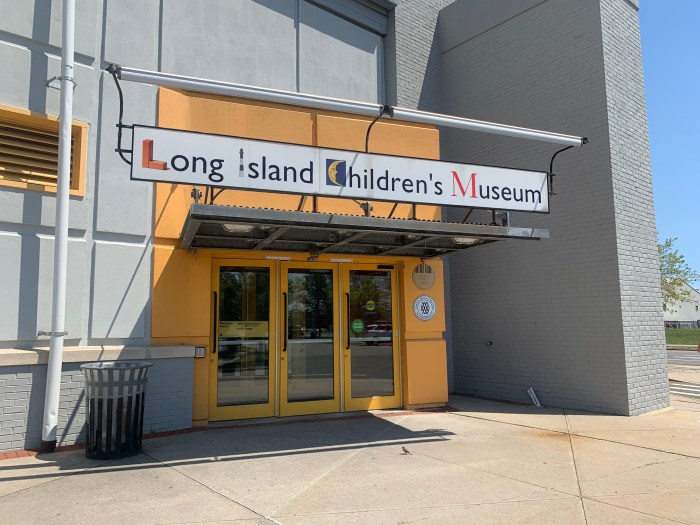Residents Raise Concerns Over Health Risks, Home Values
A ‘not in my backyard’ fight is brewing in Garden City as angry residents vented frustrations about the recent NextG Networks cell antenna installations in residential communities at last week’s village board meeting.
It was standing room only as throngs of residents filed in to Village Hall to ask why NextG, a public utility company that utilizes Distributed Antenna Systems (DAS) to operate wireless networks, placed antenna boxes on public easements in the backyards of nine Garden City residents.
While most homeowners were alarmed about potential dangers and health risks from radio frequencies emitted so close to their homes, others stated how the devices would diminish property values.
Mayor Robert Rothschild addressed the volatile situation immediately and explained to residents that the board has been discussing the topic for 18 months. He recalled that residents were upset when NextG proposed to put the antenna boxes used for cell phone reception on the front of lampposts. “That was unacceptable to the residents, so we trustees, through many discussions with a lot of residents made the decision that we would go back to NextG to come up with an alternative proposal for the placement of these,” the mayor said.
The mayor went on to explain that the village participated in lengthy negotiations with NextG. “We finally got them to take it off the front of houses, which is where they wanted to do it on the lampposts and we got them to put them with the remainder of the other easements, which they legally have every right to do,” Mayor Rothschild said. The mayor further stated that Verizon, Cablevision and VIOS have their utility easements where NextG placed their DAS.
With recent approval of the Town of Hempstead ordinance, cell phone towers may not be placed within 1,500 feet of schools, homes, day care centers and houses unless cell phone companies can prove there is an urgent coverage gap. Village Counsel Gerard Fishberg told audience members that the ordinance applies only to cell towers and not the types of cell phone antennas in question. He said that the DAS are commonly used in tunnels and shopping centers. “My guess is that if you’ve been to Roosevelt Field, there’s probably a DAS system within Roosevelt Field that allows you use your phone inside the stores,” he said. Fishberg maintained that the technology has been around for a long time. “The Federal Communications Law requires that if the system meets certain standards, the RF Emissions, if it meets certain standards that is set forth by the federal government that it is illegal, it’s impermissible for a municipality to prevent such a systems from being installed based on health and safety reasons,” he said.
Mary Timmins, a resident, addressed the board about her concerns. She said, “We believe the current placement of these systems will have a detrimental effect on home values and could be a potential health risk as it is not known as to what might be the adverse health effects from long-term exposure to these RF emissions.” She also requested the village work swiftly along with NextG towards a resolution whereby these DAS units are removed from residents’ yards and relocated to an appropriate placement.
Former Board Trustee Bruce Tornio said that there was not a proper dissemination of information about an issue that affects the quality of life of the residents. “We understand as neighbors that you are looking out for our benefit. It does not appear we have been given the opportunity to provide our input into the issue,” he said. While he does not have a device in his backyard, Torino was just as concerned about his neighbors’ well-being. He said that NextG would like the residents to believe the equipment safe, but many people have a degree of skepticism about such claims. “The question is why have we as the village not have more information that we too can cooperate with you as walk through the minefield of new and different type of electronic exposure,” he said. “Why aren’t we part of the solution instead of being treated like mushrooms?” Tornio said.
Joanne and Anthony Agrippina asked if residents should further fight this battle themselves or will the village take action to resolve the issue. “I will stop at nothing to have this removed,” Mrs. Agrippina said. Mr. Agrippina further questioned if the board members were just throwing up their hands on the issue.
Trustee Andrew Cavanaugh explained that the board has listened to the opinion of counsel and has concluded that a lawsuit against this kind of installation is “not indicated” at this time. Cavanaugh stated that on a fair reading of the law, “it is unlikely that litigation will change the outcome.”
Trustee Brian Daughney said that the board has been working on this issue. “We haven’t been sitting here doing nothing but then why can’t you give us some credit that we’ve been doing this for 18 months?” Daughney went on to say, “We are going to go back and try and work on this some more.”
According to Peter Heimdahl, a representative from NextG who attended the meeting, said the company worked with the village for 18 months on the antenna proposals. He said he will continue to work with the village board and address residents’ concerns. “I want to remind everybody here. NextG is a public utility. We enjoy the same rights and privileges as other utility companies,” he said. He went on to say that it is perceived to be dangerous because of emissions. “We are 300,000 times below the FCC municipal limit. This is a safe technology,” Heimdahl said.
The mayor added that the board will consider residents’ suggestions and go back to NextG to discuss the issue. “We will go back to NextG and we will see what we can do,” the mayor said. “We are residents. We pay taxes…We have a vested interest in this and we don’t do what we’re doing because we have nothing else to do in our lives. We care about this village a lot,” he said. “We try to make the right decisions for everybody, but it’s not easy.”



























